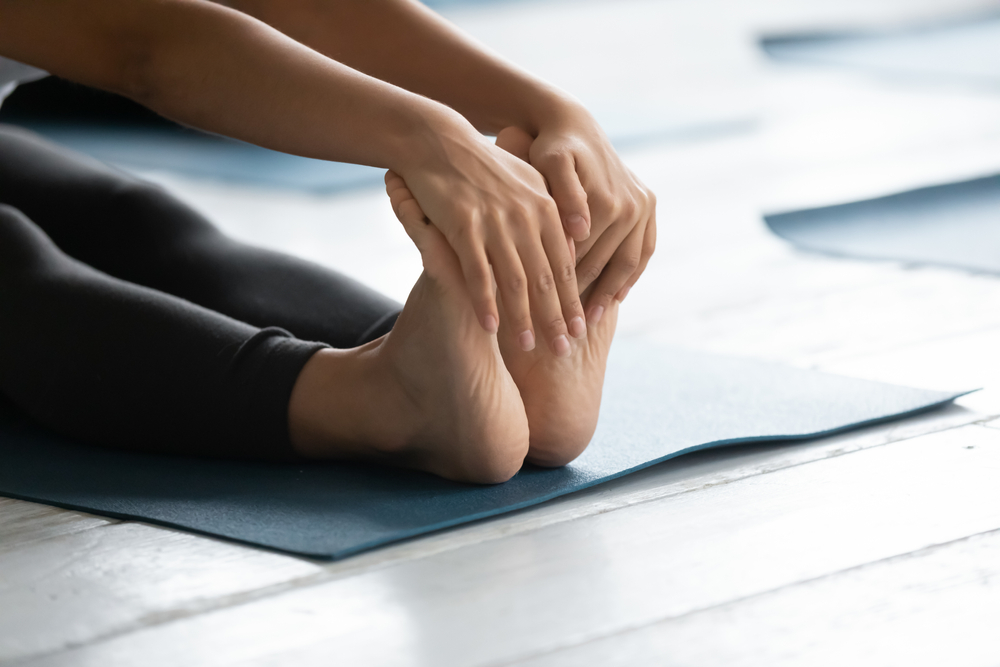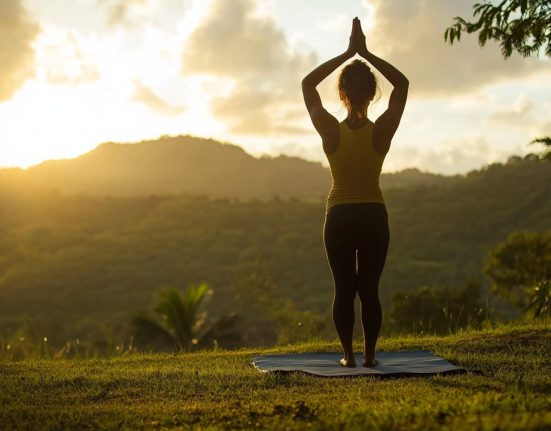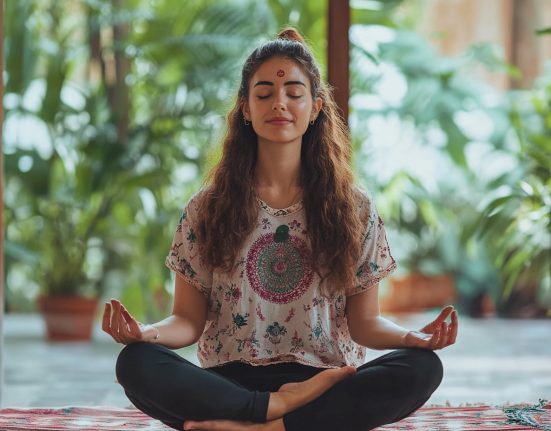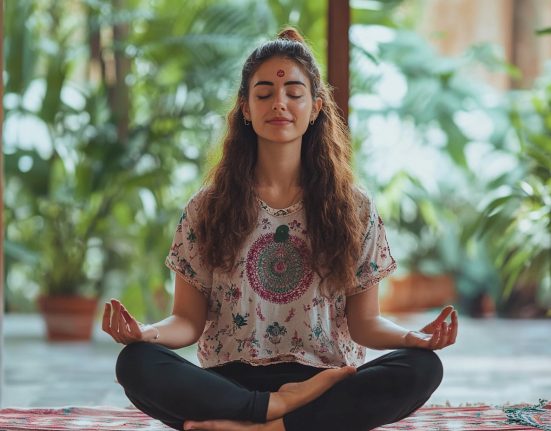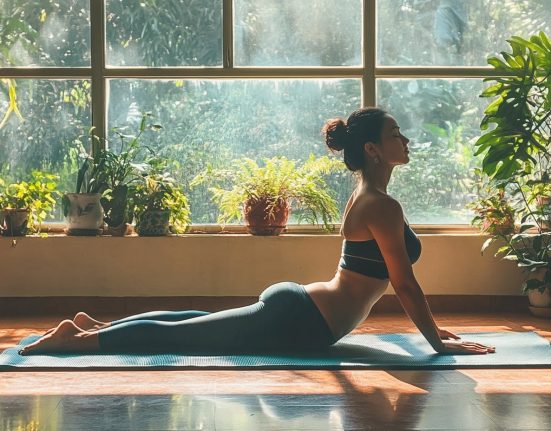Flexibility can seem like something you’re either born with or not. Walk into any yoga class and you can see it firsthand—there’s one group of people who can easily bend, twist and touch their toes and another group who relies heavily on straps, blocks and bent knees to get into each posture and position.
If you’re part of the less-than-flexible group, don’t despair. While some people are naturally more flexible than others, it’s possible to improve your flexibility—even if you haven’t touched your toes in years (or ever). Learn from three experts below how you can improve your flexibility, as well as why it’s important for your overall health and well-being.
What Is Flexibility?
Simply put, flexibility means the muscles and joints in your body can move without restriction or pain, says Ellen Barrett, a women’s wellness expert, group exercise instructor and yoga teacher in Connecticut.
“When you zoom out and see the big picture, flexibility makes for a larger comfort zone, so you can move around the world with greater ease,” says Barrett.
Why Flexibility Matters
If you’ve ever woken up with your body feeling stiff and achy, then you know exactly why flexibility is important, says Chad Benson, kinesiologist and education manager at WRKOUT, an online personal training platform.
“General flexibility is key to ensuring you can move at your own discretion without constantly feeling like you have a monkey on your back,” says Benson. “At the same time, tasks like those of daily living, sport and fitness require varying degrees of stretch and range of motion to perform successfully without risking acute or wear-and-tear injuries.”
This greater sense of ease not only feels better in the body, but also proves essential in the busy lives we live today—especially for people looking to boost their performance in the gym, says Austin Martinez, the director of education for StretchLab, a wellness company that offers assisted stretch sessions nationwide.
“Your body is constantly under strain from external factors—stress, fitness, work and home-related repetitive activities,“ he says. “As fitness has grown to become a core value for more people, flexibility is more important than ever.”
Benefits of Flexibility
Being flexible has many benefits—starting with helping you feel good in your body, says Benson.
“Nobody wants to feel like the Tin Man from The Wizard of Oz,” he says. “Being supple and agile because of flexibility can have both physical and mental benefits. It gives a bounce to your step, and it just feels good to move without restriction.”
Flexibility training can also reduce risk of injury, prevent or correct muscle imbalances, improve posture and enhance joint range of motion, according to the National Academy of Sports Medicine.
One 2020 study found regular stretching can help improve heart health, and another 2020 study found 30 minutes of stretching five times a week helped lower blood pressure better than walking for the same amount of time in people with high blood pressure.
Flexibility is also increasingly important as you age. A 2012 study concluded that flexibility training can improve range of motion in older adults, and a 2014 study found a regular exercise and stretching program can help increase lower-body flexibility, dynamic balance and low-back strength[4], which all help reduce the risk of falls in older adults.
How to Improve Flexibility, According to Experts
If you’re ready to get some of those benefits yourself, here are seven ways to get your flexibility training on.
1. Pay Attention to Your Body
The first step to boosting your flexibility is noticing which areas of your body move easily and which ones don’t, says Barrett.
“Lots of people are so disconnected from their bodies that they don’t realize their own lack of flexibility,” she says.
Not sure which areas need your attention? Tightness is most common in the neck and shoulders, along with the hamstrings because of how much sitting we do, she says, so assess those spaces first.
2. Maintain Good Posture
One of the best ways to improve your flexibility is by focusing on improving your posture, says Barrettt.
Any time you do any movement where your head is in front of your body and your shoulders are rounded forward—think driving, sitting, texting and working on the computer—your muscles are in an unnatural position that can cause tightness. You can correct it by simply sitting up straighter, says Barrett. “Your ears need to stack over your shoulders and your shoulders need to stack over your hips,” she says.
3. Stretch and Strengthen
When it comes to boosting flexibility, most people think of stretching, but Barrett says strength and flexibility take equal billing when it comes to enhanced mobility.
“Flexibility and strength need to be symmetrical to each other,” she says. “It’s like yin and yang. Strong muscles are a liability if they are not flexible.”
Some of her favorite workouts that improve both flexibility and strength include barre, Pilates, yoga and dance.
4. Sit on the Floor
How often do you sit on the floor? Probably not very often, but this “outside-the-box” exercise can help you challenge yourself because sitting on the floor is actually a stretch for the hips, back, knees and ankles, says Barrett.
“Sitting on furniture is not a stretch, as that range of motion is so small and we do it all of the time in modern life,” she says. “Sitting on the floor requires a bigger range of motion, and even getting down to the floor stretches us.”
You can sit on the floor in a variety of positions, too. She recommends sitting cross-legged, with your legs straight out or with your knees splayed out in a “butterfly” shape, or even kneeling.
Basically, sit as you did when you were a child. “If you think about it, kids can sit on the floor all day and be comfortable,” says Barrett. “What happens to us adults?”
Aim for about 15 minutes in any position that’s comfortable for you for a whole-body health boost, she says. And you can do it any time—from during work hours to after dinner. “I tell my clients to watch television or take a phone call on their yoga mats,” she says.
5. Include Flexibility Training in Your Workout
If you already exercise regularly, an easy way to boost flexibility is to incorporate modalities like stretching and foam rolling into your warm-up and cool-down time, says Martinez.
Meanwhile, Barrett recommends signing up for a gentle yoga class. “Even doing a class just once a week can be a game-changer,” she says.
That said…
6. Don’t Wait for a Workout to Work on Your Flexibility
Getting to the gym can be hard some days, so don’t put off your flexibility training just because you missed a workout. Instead, do simple stretches while sitting at your desk or waiting in line at the store, says Barrett.
Benson recommends having a morning routine that includes household chores to get yourself moving. He also suggests making sure you change positions frequently throughout your day.
Even walking from one place to another is an opportunity to improve your flexibility, Benson says. “Walk with a long stride versus lazily sauntering from point A to B,” he recommends.
7. Spend a Few Minutes Each Day Stretching
The best part of flexibility training is that you don’t have to spend hours on it to see improvement—you’ve just got to use the time you have and make it work with your life, says Martinez. For him, that means stretching every morning while his coffee is brewing.
“It’s a short routine that consists of six stretching poses,” he says. “This routine boosts my mood and improves my circulation, flexibility and mindset for the day in such a short amount of time.”
If you’re more of a night owl than an early bird, try stretching during your lunch break at work or before you go to bed, he suggests.
Ready to put some of these tips into practice? The key to flexibility—just like anything worth achieving in life—is consistency, says Martinez. “Make a plan, form it as a habit and stick to it.”
We feel more flexible already.



